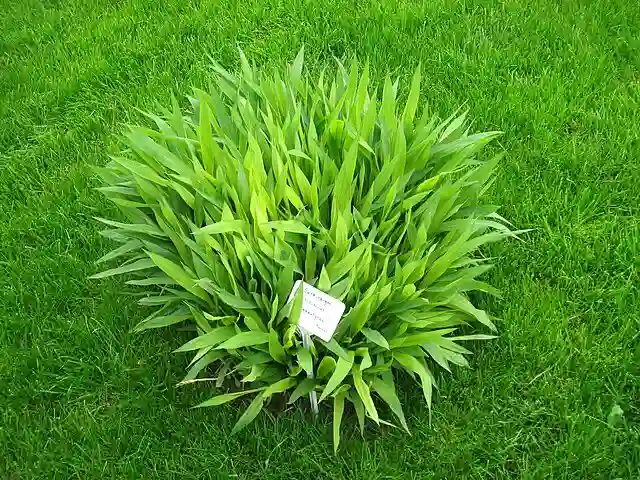What Is Aglaonema Red Stardust?
Aglaonema Red Stardust is a popular variety of the Aglaonema plant, known for its red, pink, and green foliage. The leaves are splattered with red and pink specks, resembling stardust, hence the name. This plant is part of the Araceae family and originates from Southeast Asia. It’s favored for its easy-going nature and its ability to thrive in low-light conditions, making it a favorite among indoor gardeners like myself.
26 Species in Genus Aglaonema
How Do I Care for Aglaonema Red Stardust?
Light: One of the reasons I love Aglaonema Red Stardust is because it tolerates low to medium light levels. In my experience, placing it in indirect light keeps the colors vibrant. Too much direct sunlight can cause leaf burn, so I keep mine in a spot that gets filtered light or near a north-facing window.
Watering: When it comes to watering, I’ve learned that the key is to let the soil dry out between waterings. Aglaonema Red Stardust prefers evenly moist soil but can suffer from root rot if overwatered. I usually water mine once a week or when the top inch of the soil feels dry to the touch. During winter, I reduce watering frequency since the plant’s growth slows down.
Temperature and Humidity: Aglaonema Red Stardust thrives in temperatures between 65-80°F (18-27°C). It doesn’t appreciate cold drafts or sudden temperature changes, so I make sure to keep it away from windows during winter. This plant enjoys moderate humidity, so placing it in more humid areas of the home, like the bathroom, works well. When the air gets too dry, I use a humidifier or mist the leaves occasionally.
Fertilizing: In my experience, fertilizing once a month during the growing season with a balanced liquid fertilizer keeps my Aglaonema Red Stardust happy and healthy. During the dormant winter months, I skip the fertilizer.
How Do I Propagate Aglaonema Red Stardust?
Propagation is an easy way to grow more of these beautiful plants. I’ve successfully propagated my Aglaonema Red Stardust through division and stem cuttings.
Division: When my plant becomes large and starts to crowd its pot, I divide it into smaller sections. I carefully remove the plant from its container, gently separate the roots, and repot the divisions in fresh soil. This method is straightforward and guarantees a healthy new plant.
Stem Cuttings: I’ve also propagated Red Stardust by cutting a healthy stem just below a node and placing it in water or directly into soil. If using water, I wait for the roots to grow before planting in soil. Patience is key here, as the roots can take a few weeks to develop.
What Should I Plant With Aglaonema Red Stardust?
When designing indoor plant arrangements, I find that pairing Aglaonema Red Stardust with other low-light plants creates a visually appealing display. It looks great alongside Snake Plants, ZZ Plants, and Pothos, which have similar care requirements. For a more dramatic effect, I’ve paired it with dark-leaved plants like Raven ZZ or a Burgundy Rubber Plant, which make the red hues pop.
How Do I Repot Aglaonema Red Stardust?
I repot my Aglaonema Red Stardust every 1-2 years, depending on its growth. When repotting, I choose a pot that is 1-2 inches larger in diameter than the current one and ensure it has proper drainage. I prefer using a well-draining potting mix, such as a blend of peat, perlite, and sand. After repotting, I water it thoroughly and let it settle into its new home.
Common Problems with Aglaonema Red Stardust
Yellowing Leaves: From time to time, I notice yellowing leaves on my Red Stardust. This can be due to overwatering, underwatering, or even a lack of light. Checking the soil moisture and light exposure usually helps resolve the issue. Removing the yellow leaves also encourages new growth.
Pests: Though generally pest-resistant, Aglaonema Red Stardust can occasionally attract spider mites or mealybugs. I inspect my plant regularly and, if I see any pests, I wipe the leaves with a damp cloth or use insecticidal soap.
How Can I Make the Colors of Aglaonema Red Stardust More Vibrant?
To enhance the colors of my Aglaonema Red Stardust, I make sure it gets enough light. While it can survive in low light, I’ve noticed that the colors are more vibrant in medium, indirect light. Fertilizing during the growing season also promotes healthy growth and vibrant hues.
Is Aglaonema Red Stardust Toxic to Pets?
Unfortunately, Aglaonema Red Stardust is toxic to pets. It contains calcium oxalate crystals, which can cause irritation if ingested by cats or dogs. I make sure to keep mine out of reach of my pets and have found that hanging planters or higher shelves work well for this purpose.
Final Thoughts on Aglaonema Red Stardust
Aglaonema Red Stardust is a fantastic addition to any indoor plant collection. Its striking colors, easy care requirements, and ability to adapt to low-light conditions make it an excellent choice for both beginners and experienced plant enthusiasts. From my experience, with just a little attention and care, this plant will thrive and add a splash of color to any space.
If i die, water my plants!


